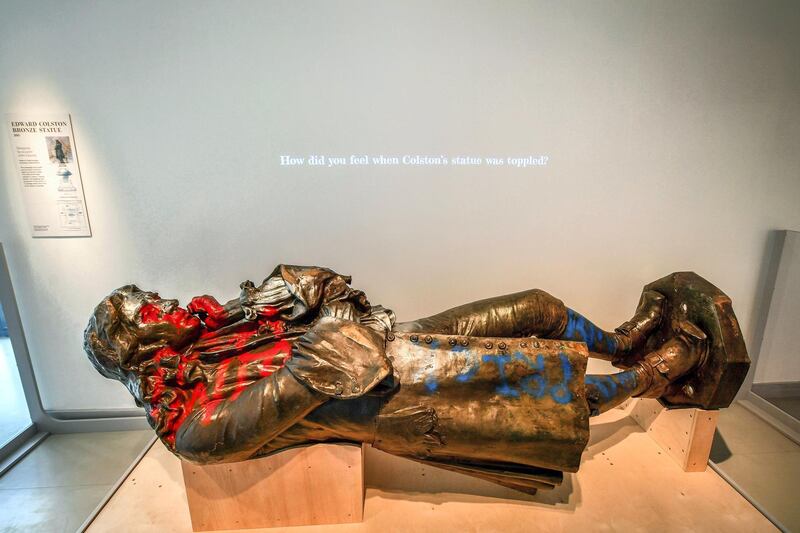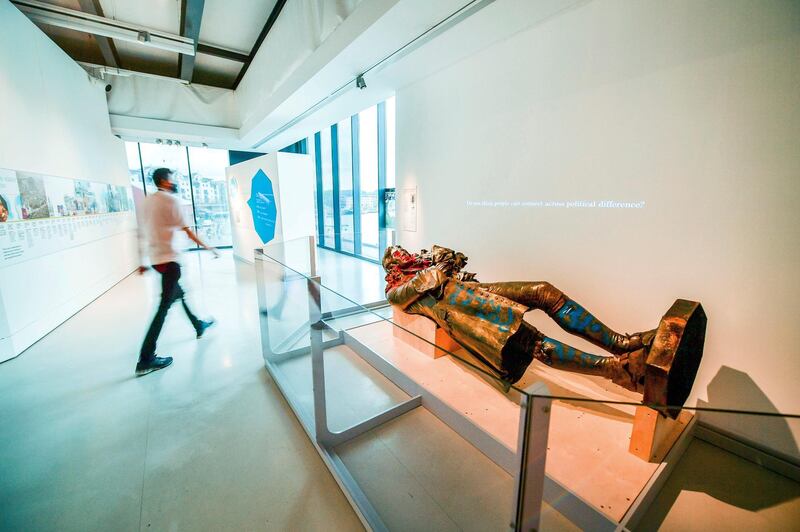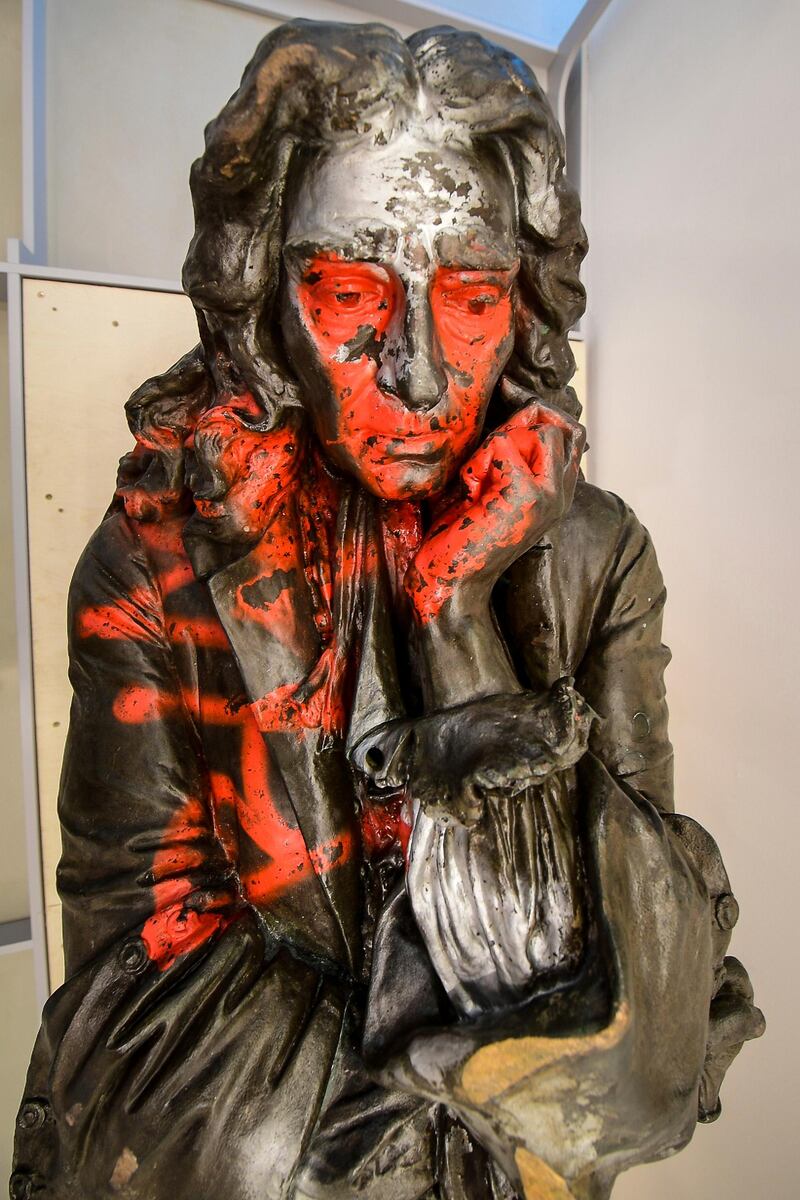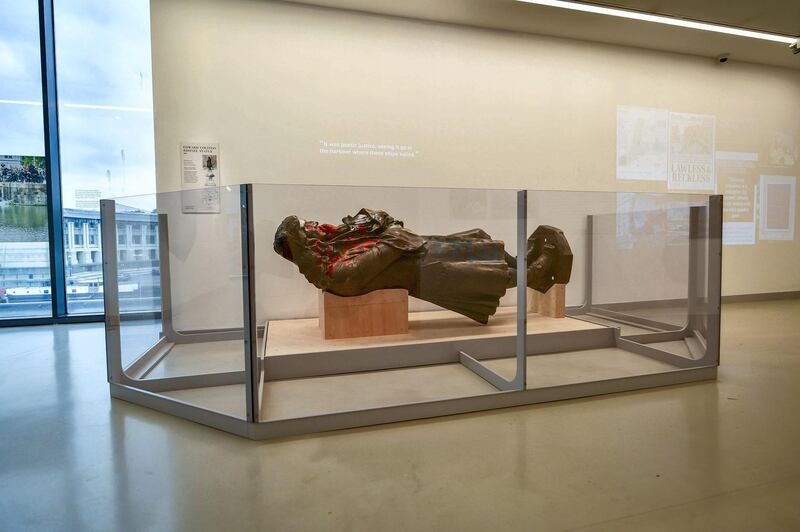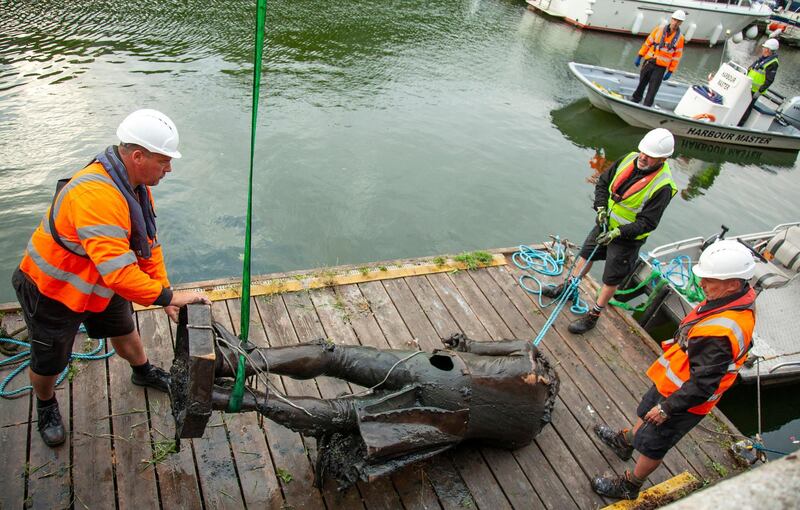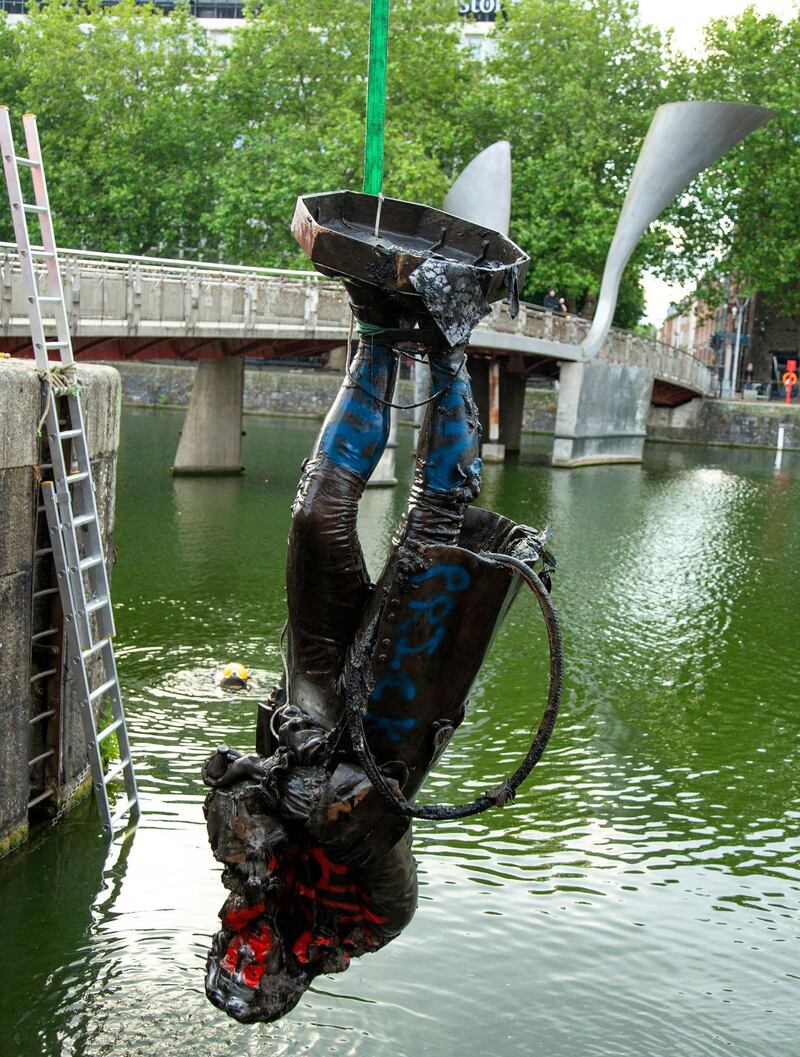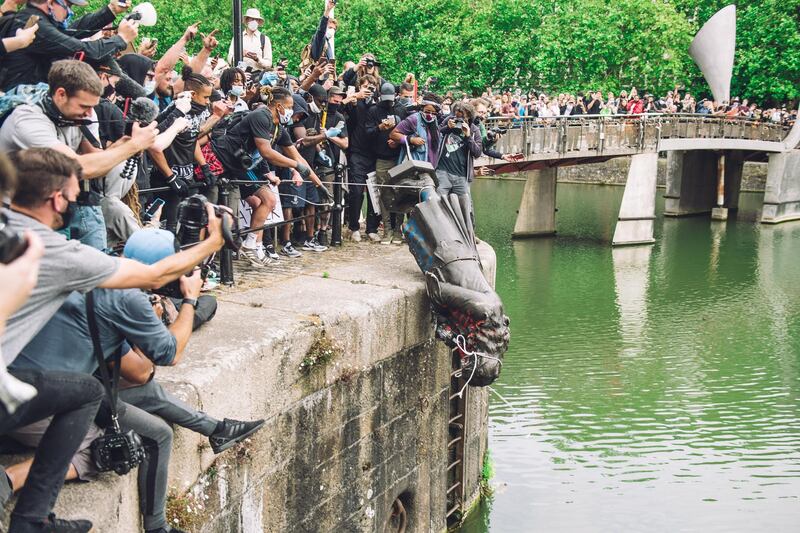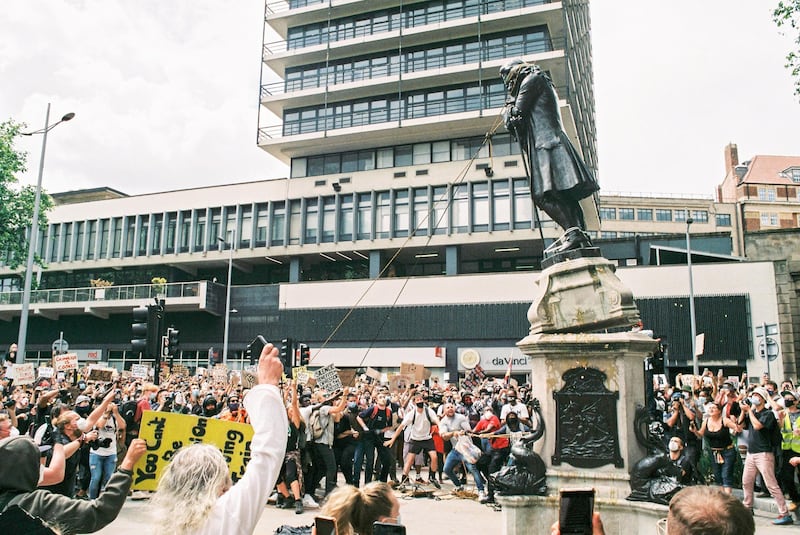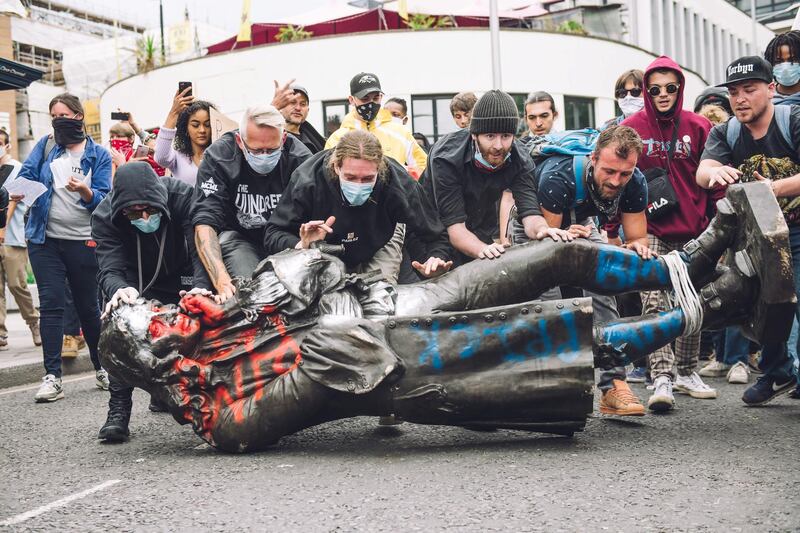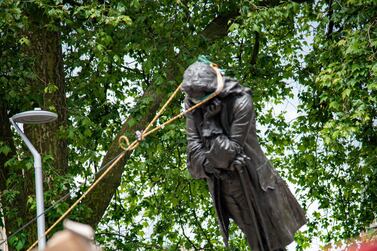A statue toppled during Black Lives Matter protests was exhibited on Friday as Britain continues to grapple with the best way to mark its role in human exploitation.
The bronze memorial to 17th-century slave trader Edward Colston was ripped from its plinth in the south-west city of Bristol in June last year, dragged several hundred metres and dumped in the harbour during worldwide anti-racism protests.
It was retrieved from the water several days later and, still bearing the scars of the uprising despite months of renovation work, went on public display on Friday as part of an exhibition.
The statue – stained with red and blue paint – was accompanied by placards used at the Bristol protest over the death of George Floyd in the US the previous month. The revolving collection could soon include racist hate mail sent to Bristol's black mayor Marvin Rees, the city council said.
Officials in Bristol said the statue was now laid on its back to represent the toppling of the wealthy merchant who was active in the Atlantic slave trade.
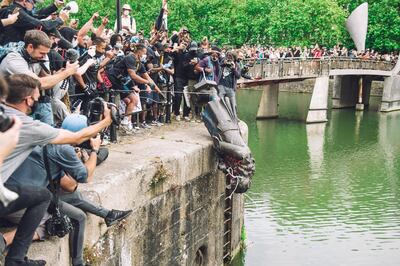
There were concerns that lying the statue on its back would create the impression of a "medieval knight lying in state" and curators considered displaying it at 45 degrees, The Times newspaper reported.
Positioning the statue in an upright posture was rejected because it would undermine its toppling and would cost too much, officials said. But the debate highlighted divided opinion of the trader, who was also a significant philanthropist in the city.
“I can’t deny the statue was an affront to me and I recognise the historical poetry in it being rolled through the streets and thrown into the harbour,” Mr Rees told members of Parliament last year.
Demonstrations in the UK were in protest against Mr Floyd’s death at the hands of a white police officer but also focused on Britain’s colonial legacy. London’s mayor Sadiq Khan set up a commission to examine the propriety of colonial-era statues in the multicultural capital.
A history commission set up after the protests is asking visitors to the exhibition at Bristol’s M Shed museum for opinions on the fate of the statue. Options include banishing it from public view, including it in a new museum about the transatlantic slave trade or returning it to its former position.
A photograph from 1895, also on display, shows how thousands thronged the streets for the unveiling of the statue.
"We're using this opportunity to find out what local people think because we have to live in this city together," said Dr Shawn Sobers, who is part of the commission.
